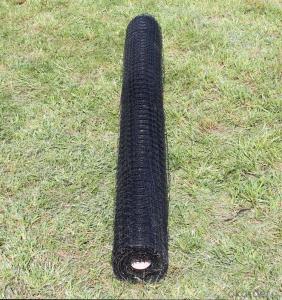Plastic pipes have become a popular choice for various applications in the construction and plumbing industries due to their durability, cost-effectiveness, and ease of installation. However, when it comes to connecting these pipes, selecting the right fittings is crucial to ensure a secure and leak-free connection. In this guide, we will explore the different types of fittings available for plastic pipes, their compatibility, and how to choose the best ones for your project.
Understanding Plastic Pipe Fittings
Plastic pipe fittings come in a variety of shapes and sizes, each designed to fulfill a specific function in the plumbing system. They can be categorized into several types, including:
– Push-fit Fittings: These fittings are easy to install and require no special tools. They connect pipes by simply pushing them into the fitting until they click into place.
– Socket-Type Fittings: These fittings have a socket on one end that slides over the pipe and is secured with a ring or a clamp.
– Compression Fittings: They work by compressing a ring against the pipe, creating a seal. This type of fitting is often used in situations where a secure connection is needed.
– Flare Fittings: Similar to compression fittings, flare fittings are used with flare-style pipe ends and provide a secure connection.
– Solder Fittings: These fittings are used with pipes that can be soldered, such as copper. They are not common for plastic pipes but are worth mentioning for their versatility.
– Clamp Fittings: These fittings use a clamp or a hose clamp to secure the pipe in place. They are adjustable and can be used with pipes of different diameters.
Material Compatibility
When choosing fittings for plastic pipes, it’s essential to consider the material compatibility. Not all fittings are suitable for all types of plastic pipes. Here are some common plastic pipe materials and their compatibility with fittings:
– PVC Pipes: These pipes are compatible with a wide range of fittings, including push-fit, socket-type, and compression fittings.
– PEX Pipes: PEX pipes are flexible and can be used with push-fit, clamp, and compression fittings. However, they are not compatible with solder fittings.
– CPVC Pipes: Chlorinated polyvinyl chloride (CPVC) pipes are similar to PVC but can handle higher temperatures. They are compatible with push-fit, compression, and solder fittings.
– ABS Pipes: ABS pipes are durable and can be used with push-fit, socket-type, and compression fittings. They are not suitable for solder fittings.
– Polypropylene Pipes: These pipes are resistant to chemicals and can be used with push-fit and compression fittings. They are not compatible with solder fittings.
Choosing the Right Fittings
Selecting the right fittings for your plastic pipes involves considering several factors, including the type of plastic pipe, the application, and the environment in which the pipes will be used. Here are some tips to help you choose the right fittings:
1. Match the Fitting to the Pipe Material: Ensure that the fittings you choose are compatible with the type of plastic pipe you are using.
2. Consider the Application: Different applications may require different types of fittings. For example, push-fit fittings are ideal for quick and easy installations, while compression fittings may be more suitable for applications where a secure connection is needed.
3. Check the Temperature and Pressure Ratings: Make sure the fittings you choose can handle the temperature and pressure requirements of your plumbing system.
4. Look for Quality: Choose fittings from reputable manufacturers that are known for their quality and durability.
5. Consult a Professional: If you are unsure about which fittings to choose, consult a professional plumber or a plumbing supply specialist for advice.
Installation Tips
Proper installation of plastic pipe fittings is crucial to ensure a long-lasting and leak-free connection. Here are some tips for installing plastic pipe fittings:
1. Clean the Pipe Ends: Before installing the fitting, make sure the pipe ends are clean and free of any debris.
2. Use the Correct Tools: Some fittings may require specific tools for installation, such as a compression tool for compression fittings.
3. Follow the Manufacturer’s Instructions: Each type of fitting may have specific installation instructions provided by the manufacturer. Make sure to follow these instructions carefully.
4. Check for Leaks: After installation, check for any leaks by applying pressure to the system and inspecting the connections.
5. Secure the Fittings: Ensure that the fittings are securely in place and that there is no movement that could cause leaks over time.
Conclusion
Selecting and installing the right fittings for plastic pipes is an essential aspect of any plumbing project. By understanding the different types of fittings, their compatibility with various plastic pipe materials, and following proper installation techniques, you can ensure a reliable and efficient plumbing system. Remember to always consult a professional if you are unsure about any aspect of the process. Happy plumbing!

